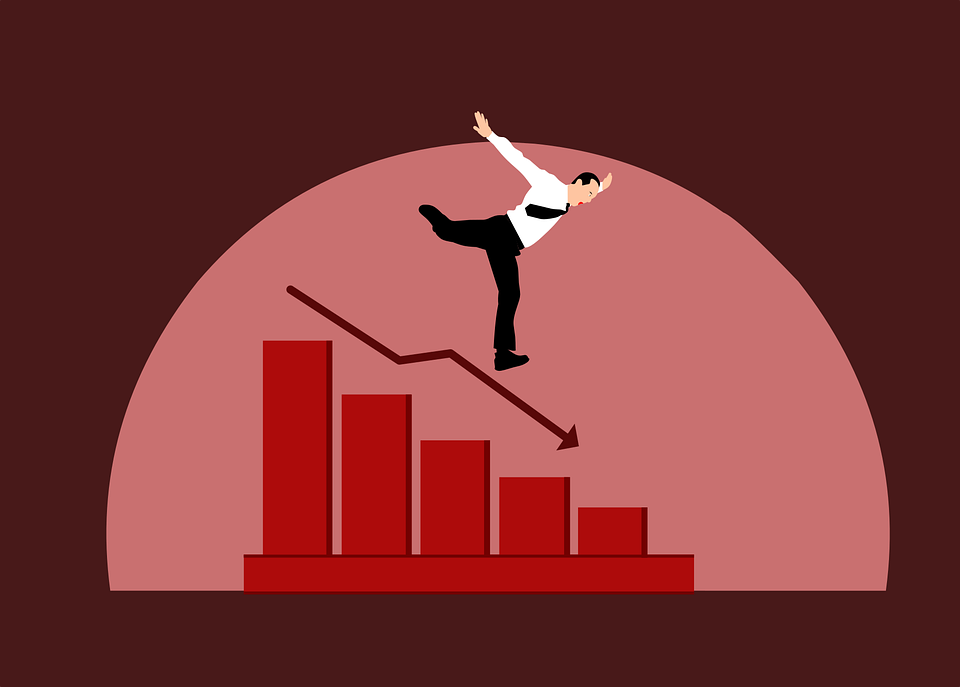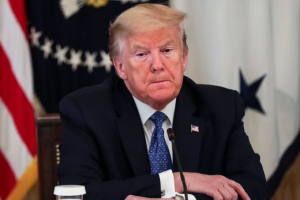The talent of Michael Lewis, of Liar’s Poker fame, was needed to get inside the doomsday machine and write a compelling and definitive account of the 2008 subprime crisis, The Big Short, adapted into a popular film.
Lewis had given up a successful career at the Solomon Brothers to write about the ‘insane people’ who play with billions of dollars of public money in hedge funds and the likes in his first book much before The Big Short.
Also Read| Great Depression to COVID: Top 5 market crashes in American history
Sample this lengthy part from the Prologue of The Big Short: “The two decades after I left, I waited for the end of Wall Street as I had known it. …Over and over again, the financial system was, in some narrow way, discredited. Yet the big Wall Street banks at the centre of it just kept on growing, along with the sums of money that they doled out to twenty-six-year-olds to perform tasks of no obvious social utility. The rebellion by American youth against the money culture never happened. Why bother to overturn your parents’ world when you can buy it and sell off the pieces? At some point, I gave up waiting. There was no scandal or reversal, I assumed, sufficiently great to sink the system.
Then came Meredith Whitney, with the news. Whitney was an obscure analyst of financial firms for an obscure financial firm, Oppenheimer and Co., who, on October 31, 2007, ceased to be obscure. On that day she predicted that Citigroup had so mismanaged its affairs that it would need to slash its dividend or go bust. It’s never entirely clear on any given day what causes what inside the stock market, but it was pretty clear that, on October 31, Meredith Whitney caused the market in financial stocks to crash. By the end of the trading day, a woman whom basically no one had ever heard of, and who could have been dismissed as a nobody, had shaved 8% off the shares of Citigroup and $390 billion off the value of the U.S. stock market. Four days later, Citigroup CEO Chuck Prince resigned. Two weeks later, Citigroup slashed its dividend. From that moment, Meredith Whitney became E. F. Hutton: When she spoke, people listened. Her message was clear: If you want to know what these Wall Street firms are really worth, take a cold, hard look at these crappy assets they’re holding with borrowed money, and imagine what they’d fetch in a fire sale.
Also Read | US inflation rate at a 40-year high | A timeline: 1930-2022
…The value of your securities is as illusory as the value of your people. Rivals accused Whitney of being overrated; bloggers accused her of being lucky. What she was, mainly, was right. But it’s true that she was, in part, guessing. There was no way she could have known what was going to happen to these Wall Street firms, or even the extent of their losses in the subprime mortgage market. The CEOs themselves didn’t know. “Either that or they are all liars,” she said, “but I assume they really just don’t know.”
Now, obviously, Meredith Whitney didn’t sink Wall Street. She’d just expressed most clearly and most loudly a view that turned out to be far more seditious to the social order than, say, the many campaigns by various New York attorneys general against Wall Street corruption. If mere scandal could have destroyed the big Wall Street investment banks, they would have vanished long ago. This woman wasn’t saying that Wall Street bankers were corrupt. She was saying that they were stupid. These people whose job it was to allocate capital apparently didn’t even know how to manage their own.”
Also Read| Why is the US Fed Reserve hiking interest rates?
The 2008 stock market collapse took place on September 29, 2008. In intraday trade, the Dow Jones Industrial Average lost 777.68 points. It was the greatest point decrease in history until the stock market meltdown in March 2020, at the beginning of the COVID-19 pandemic.
On October 9, 2007, the Dow reached a pre-recession high of 14,164.53. It decreased by more than half on March 5, 2009, to 6,594.44.
The Dow Jones Industrial Average began the year at 12,474.52. Despite mounting fears about the subprime mortgage issue, it increased. On December 19, 2006, the United States Department of Commerce issued a warning that October’s new house permits were 28% lower than the previous year.
Also Read| Why US inflation is going up and when will it come down
Plummeting housing values resulted in subprime mortgage defaults. The Fed began injecting liquidity by purchasing subprime mortgages from banks. Economists issued a warning in October about the increasing usage of collateralized debt obligations and other derivatives.
As the year came to a conclusion, the Bureau of Economic Analysis (BEA) revised its growth forecast. It reported that the country’s GDP expanded by 0.5% in the third quarter. It had shrunk by 0.5%, according to previous estimates. It appeared that the US economy could withstand a housing collapse and bank liquidity limitations. The Dow finished the year at 13,264.82, marginally below its October peak.
Also Read| Where to invest during high inflation?
The BEA revised its fourth-quarter 2007 GDP growth estimate downward at the end of January 2008. It stated that growth was barely 0.6%. For the first time since 2004, the economy shed 17,000 jobs.
The Federal Reserve stepped in on March 17 to rescue the faltering investment bank, Bear Stearns. The Dow fell to an intraday low of 11,650.44 before recovering. In fact, many people believed that the Bear Stearns bailout would prevent a bear market. The Dow had risen above 13,000 by May. The worst looked to be past.
Also Read| Here’s what depreciating rupee means for stock markets
The crisis endangered government-sponsored enterprises Fannie Mae and Freddie Mac in July 2008. They required federal assistance. The Treasury Department assured an estimated $25 billion in loans and purchased equity in Fannie Mae and Freddie Mac. The Federal Housing Authority assured $300 billion in new loans. The Dow plummeted to 10,962.54 on July 15. After recovering, it stayed above 11,000 for the rest of the summer.
Lehman Brothers announced bankruptcy on Monday, September 15, 2008. The Dow fell by over 200 points.
The Fed announced its bailout of insurance giant American International Group Inc. on Tuesday, September 16, 2008. It provided an $85 billion loan in exchange for 79.9% shares, effectively acquiring control. AIG had exhausted its cash reserves. It was trying to repay credit default swaps placed against now-defunct mortgage-backed securities (MBS).
Also Read| Impact of US Feds’ biggest rate hike since 1994 on India
Money market funds suffered a $196 billion loss in the days following the bankruptcy of Lehman Brothers. Businesses had panicked and switched to much safer Treasury notes. Banks had raised interest rates because they were reluctant to lend to one another. Secretary Henry Paulson and Federal Reserve Chair Ben Bernanke handed the bank bailout bill to Congress on Saturday, September 20, 2008.
The Dow hovered around 11,000 until September 29, 2008, when the Senate rejected the bailout bill. During intraday trade, the Dow dropped 777.68 points.
To reestablish financial stability, the Fed increased its currency swaps with European, British, and Japanese central banks to $620 billion. The whole amount of liquidity needed to thaw out the credit markets was provided by the global governments.
Also Read| Explained: Changes in repo rates and their impact on stock market
The bailout bill was ultimately passed by Congress in early October, but the damage had already been done. According to the Labor Department, the economy shed 159,000 jobs in the previous month.
JPMorgan Chase oversaw the Federal Reserve’s Money Market Investor Funding Facility (MMIFF). It acquired up to $600 billion in 90-day certificates of deposit, banknotes, and commercial paper. The remaining $60 billion was raised through the money markets. However, they were also buying commercial paper from the MMIFF.
Also Read| Explained: Why has RBI allowed international trade settlement in Rupee
The Fed rapidly reduced the fed funds rate to 1%. However, the Libor bank lending rate remained at a high of 2.58 %. The Fed also coordinated a worldwide central bank bailout. The Dow responded by falling 15% for the month.
The BEA issued more terrible news at the end of October. The third quarter had a 0.3% decline in the economy, and the country was in a recession.
The Labor Department claimed in October that the economy had lost a stunning 240,000 jobs. The AIG bailout expanded to $150 billion. The Bush administration announced that part of the $700 billion bailouts would be used to purchase preferred stock in the countries’ banks.
Also Read| How to survive a market crash
Federal aid was requested by the Big Three automakers. The Dow has fallen to a new low of 7,552.29 by November 20, 2008. However, the 2008 stock market meltdown was far from done. The Fed cut the fed funds rate to 0%, the lowest level in history.
For the following four years, investors endured the emotional scars of the crisis. They panicked on June 1, 2012, because of a poor May employment report and the European financial crisis. The Dow fell 275 points. The 10-year Treasury yield fell to 1.47%. This was the lowest yield in more than 200 years. It indicated that the optimism that had faded in 2008 had not yet returned to Wall Street.
The market collapse that started with the 2008 crisis took around five years for stocks to recover. In March 2013, the Dow Jones Industrial Average returned to its October 2007 highs.
Also Read| Explained: Impact of MPC meeting on stock market
The 2008 stock market meltdown was caused by defaults on aggregated mortgage-backed securities. The majority of MBS was made up of subprime housing loans. Banks made these loans available to nearly everyone, including those with poor credit.
Many homeowners defaulted on their loans as the housing market crashed. These defaults reverberated across the financial sector, which had significantly invested in MBS. As a result, firms doing business with these banks suffered, and their stocks suffered as a result.
The magnitude of the financial crisis led to a loss of confidence in the US stock market. As a result, the stock market plummeted in the fall of 2008. The stock market in the United States did not fully rebound until mid-2013.
The 2008 stock market meltdown was caused by defaults on aggregated mortgage-backed securities. The majority of MBS was made up of subprime housing loans. Banks made these loans available to nearly everyone, including those with poor credit.
Also Read| Harshad Mehta scam: How Big Bull shook the Indian stock market
Many homeowners defaulted on their loans as the housing market crashed. These defaults reverberated across the financial sector, which had significantly invested in MBS. As a result, firms doing business with these banks suffered, and their stocks suffered as a result.
The magnitude of the financial crisis led to a loss of confidence in the US stock market. As a result, the stock market plummeted in the fall of 2008. The stock market in the United States did not fully rebound until mid-2013.







